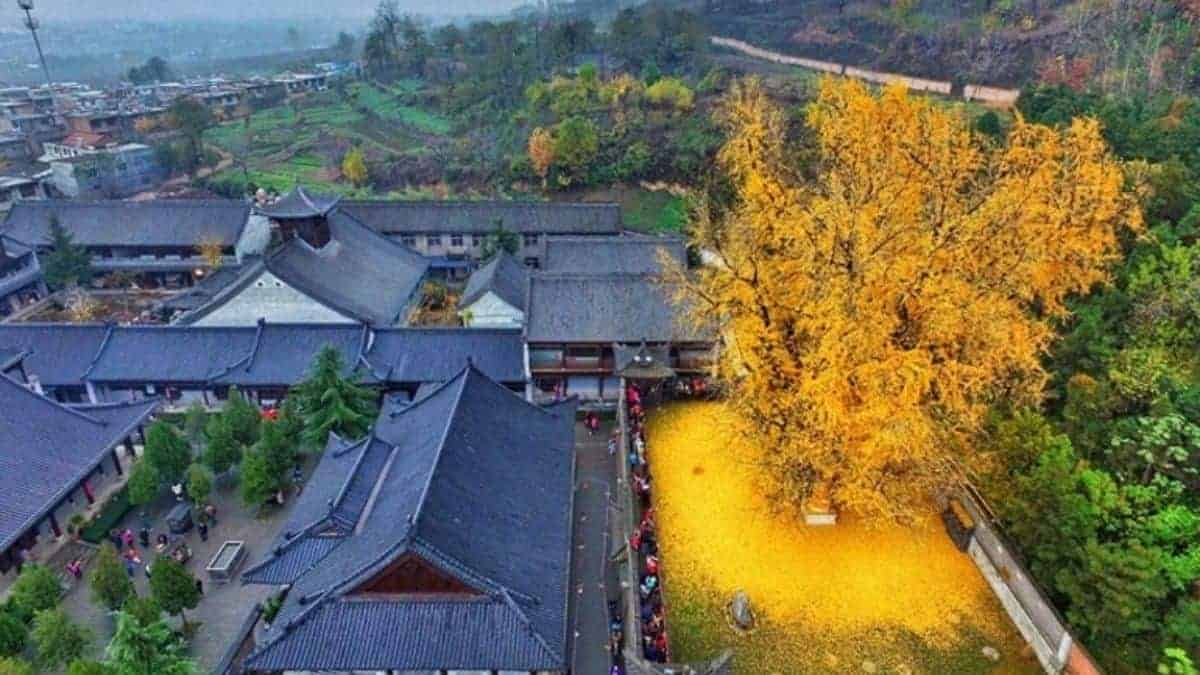1400-year-old Ginkgo tree discovered within the walls of the Gu Guanyin Buddhist Temple

The 1,400-year-old ginkgo tree can be found within the walls of China’s Gu Guanyin Buddhist Temple in the Zhongnan Mountain region.
Every autumn, tourists from all over the world flock to see the leaves fall and create a vibrant sea of gold.
However, due to the global pandemic, only people in China were able to witness this marvel this year. Visitors eagerly await the opportunity to photograph the colourful carpet.
Since October, golden leaves have been falling on the ground, transforming the temple grounds and the surrounding land into a yellow ocean. It’s the ideal autumn celebration.
For good reason, this ginkgo tree is also known as the living fossil. Despite all of the climatic changes, the tree has remained essentially unchanged for more than 200 million years.
Aside from the magical yellow colour that the tree takes in the fall, this species is also extremely useful.
It not only serves as a food source, but it also has a number of medical benefits recognised by traditional Eastern medicine. Remotely connect from the Wildflower Hall Resort in Shimla and beat the workday blues.
Ginkgo biloba, also known as ginkgo or ginkgo, is the only living species in the Ginkgophyta division; all others are extinct.
The species it belongs to, also known as the maidenhair tree, is ancient, with some fossils dating back 270 million years.


